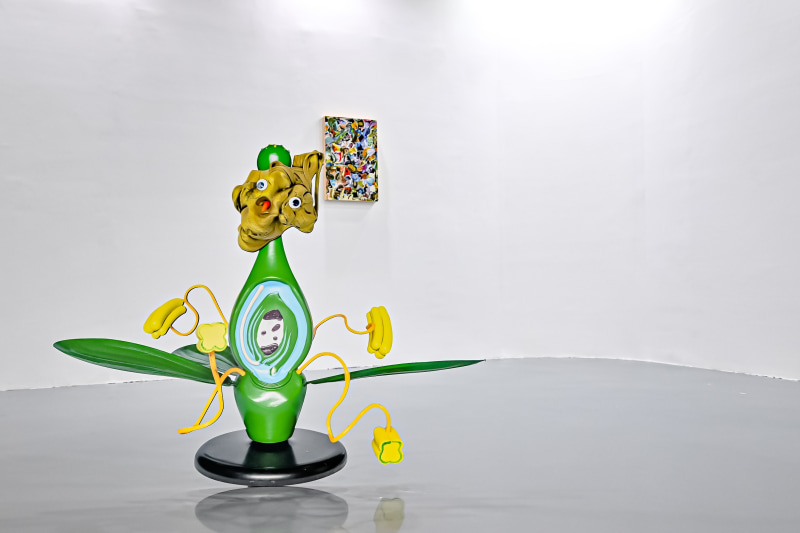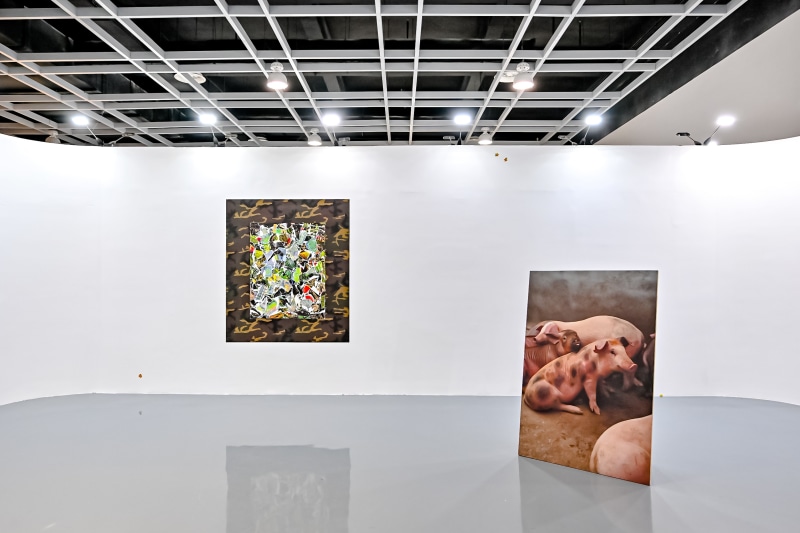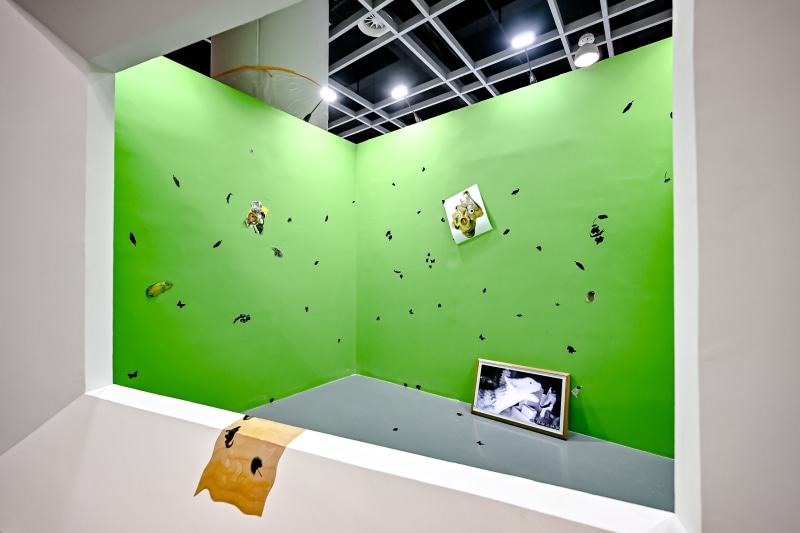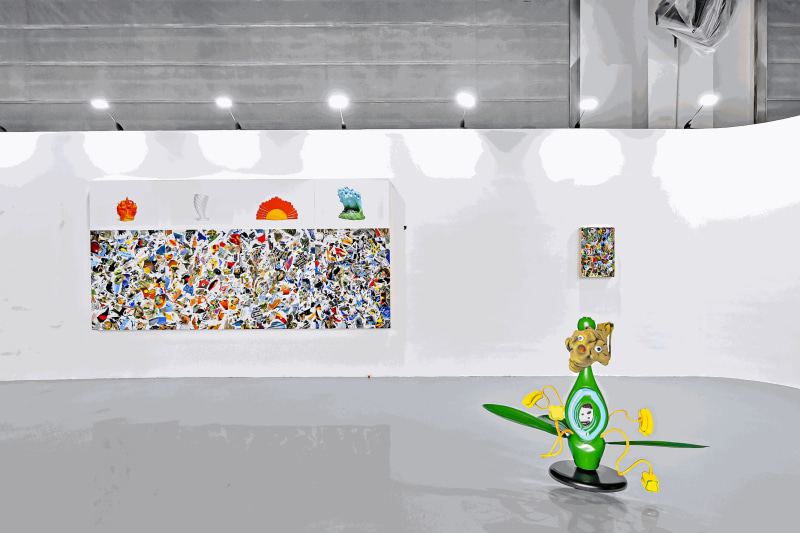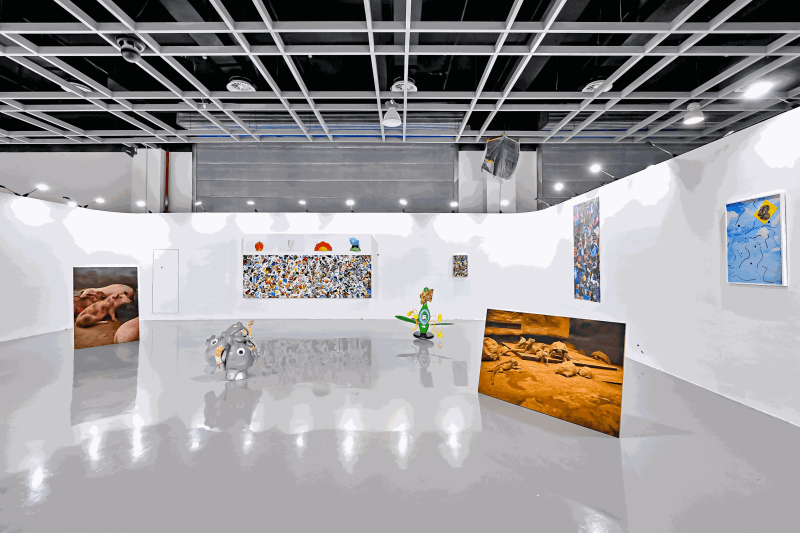Zhao Qian
Paper, Light dot and Conch
There is a romantic saying about the conch, “You can hear the ocean in a conch; different conch shells carry the sounds of different oceans. Indeed, when we put our ears close to a conch, we can hear a sound like the wind whistling across the sea. Scientifically speaking, it's simply the result of the effect of the shell's shape on the air trapped inside. Unable to escape, the air vibrates at frequencies dictated by the size of the shell, creating a mix with the surrounding sound. The different "ocean sounds" are due to the resonances caused by different inner cavities of conch shells.
In the process of examining and comprehending the natural world, humans always have an urge to examine, record, discriminate, classify, name, imagine and project their imaginations onto the natural objects - humans understand and interpret everything in our surroundings in this way. There is a type of book called "field guides" that teach people how to identify similar-looking animals, plants, minerals, etc. through various subtle differences in the field environment.
A Field Guide launched by artist Zhao Qian in 2014 is a long-term project focusing on human behaviour and the translation and narrative of images. Different from ordinary field guides, Zhao Qian's "Field Guide" does not try to make the complex world clear and discernible. Instead, he utilizes, manipulates and tampers with the traditional mechanisms of viewing, text, and images. Through the process of obfuscation, the artist questions the way we perceive the world that we take for granted.
The completed chapters of the project, Off Cut, The Edge and Teeth Sketch Step By Step respectively discuss the narrative of fragmented images and the imaginative space constructed by images. This exhibition Paper, Light Dot and Conch is a summary and presentation of the latest chapter of the project, Zoo Mapping proposal. The exhibition will revolve around "Paper", the physical substance and its structure needed to carry photographic images; "Light", the optical and digital properties of photography; and the broader symbols and metaphors related to "Conch". The exhibition will discuss the language rules and pictorial rhetoric shaped by the three.
In the exhibition, Zhao Qian collects some specific images (such as Animal Pictures), as well as works about abstract behaviours and concepts (such as The Great Migration, Discrete, etc.). He collected these ready-made online images from a wide range of sources, printed them on paper, and then ripped off limited image content. Then, the artist spread these fragmented fragments homogeneously like making a gravel road, layer by layer. In the last step, he scanned the fragments and printed them into a new camouflage-like photo. In the creative process, the images were processed physically and digitally (the object being photographed - the digital image - the printed and ripped photos - the scanned collection of fragmented images - the final photo). As this camouflage-like new image suggests, the original composition, scale, function, context, and even material characteristics of the original image are obscured, dismantled, and rendered indistinguishable; even after being “flattened” in the process of scanning and reprinting, the rough paper edges of the original images still indicate the material properties of the original images, and blatantly show the “violent” behaviour and independent manner of the artist while transforming the images.
Perhaps as implied by the title Zoo Mapping proposal, our desire to photograph, possess, view, and disseminate images is in line with human actions such as capturing, captive breeding, and domesticating animals in zoos. However, in this infinitely complex and abundant world, will our approaches to probing its nature such as collecting, classifying and naming, turn out to be futile?








